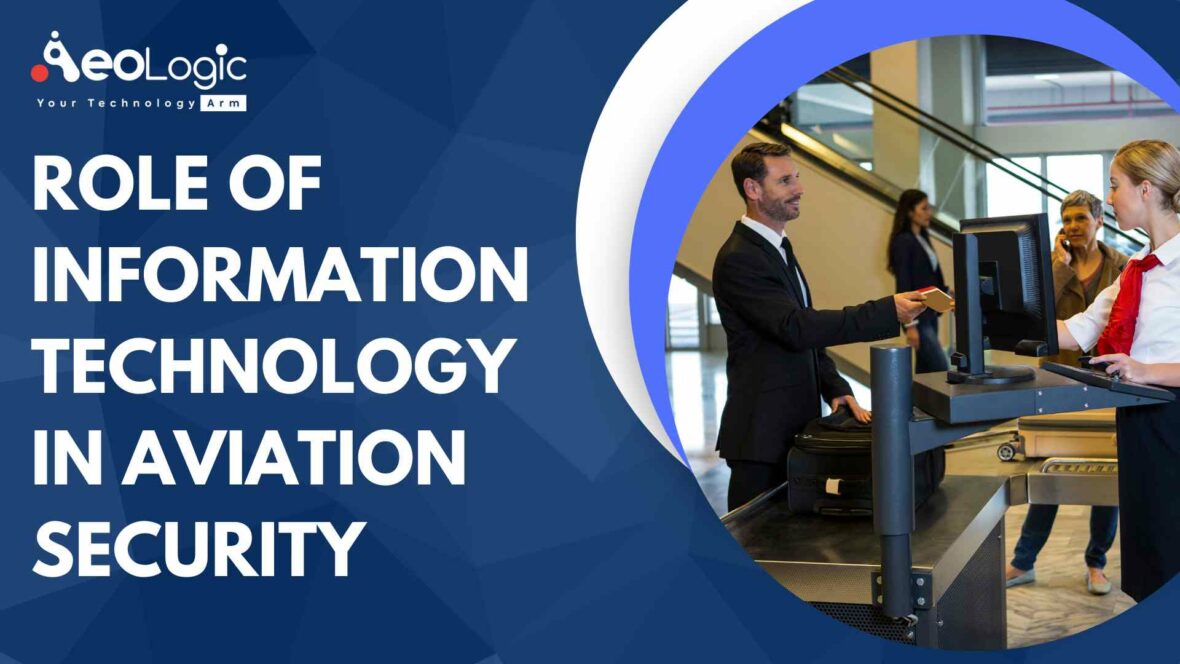Whenever there is a voting for the most popular public mode of transportation, it is the aircrafts that win. Aircraft nowadays are an extension of the technological dependency that the human race is suffering from. The three aspects that define the aviation sector in the modern lingua are speed efficiency, comfort, and safety. But nevertheless, as claimed as the safest mode still flight accidents are kind of fatal. And shake the world every now and then. In this blog, we will be pinning down the importance of the role of IT in aviation security.
Things cannot be blamed on technology, as there are several other forces like the human touch and geographical conditions that are far beyond human capacities. And it is playing their dynamics in aeronautics. The airlines want to develop further, and increase revenue and business. As well as bring in more machines and automation. However, they do not want to lose touch with their customers. Forging innovation management along with new partnerships between the IT giants and the aviation players will define the future.
The major focus of the airlines has to be on the internal protocol technologies and parts. As end to end services and airport integration can also not be neglected.
Also read: Impact of Digital Technologies on Airline Operations
Role of IT in Aviation Security
Augmented reality (AR)- is more probably to penetrate airlines and airports in the future. In order to support ground operations through the use of AR.
Chatbots- simply known as Artificial Intelligence. This could play as a single gateway for passengers.
Indoor positioning system or beacon technology- beacon creates it possible for airports and airport venders to know the location of people. As well as to send them relevant personal information. Such as gate number, flight status, baggage carousel, or even a passenger’s favorite coffee shop.
Through the role of IT in aviation security, this new advanced technology may be used in the near future to make the aviation sector more convenient and advanced.
Contributions of Technology in the Aviation Industry
- Social CRM (customer relation management) – the implementation of social media has contributed a lot. As it proved to be a major element in customer relationship management. Platforms like Facebook and Twitter have opened up new channels through which organizations can engage their clients and cultivate customer loyalty.
- Digitalization is another major factor that is making the work of airlines easy through the adoption of electronic formats. For crucial regulatory and tracking documents.
- Application of advanced and highly equipped passenger service units like overhead PSUs and armrest PSUs along with tablets and wireless headgear instead of backrest TVs for the entertainment of the passengers.
- For comfort many airlines are also strategizing to install new technological equipment. Such as automated passenger seats for comfortable flights where passengers do not have to struggle with the seat positioning for comfort.
- Navigation technology is another such contribution of technology build in the aviation industry.
- Highly secured software for protecting the private information of the company. Also protecting the passenger is another such or rather very imperative contribution of technology.
Changing Technology in Check-Ins
Web Check-In
The role of IT in aviation security encompasses the significance of web check-in. The passengers are able to check in through the websites of the airlines on their computers, laptops, or handheld devices. Also, the passenger can select a seat online, and save or take a copy of their boarding cards. That too within the comfort of their workplace or home. In case there is no availability of check-in luggage then the passenger can straightforwardly report to the governmental formalities.
Check-In Via Kiosks
The finest examples of self-service at the airports are kiosks. These kiosks facilitate the passengers to check in themselves. And even help them in obtaining a copy of the passenger. The traveler has to report in advance otherwise the passenger can directly move to the security zones.
Tele Check-in Services
The check-in can also be done with the help of the telephone. Generally, airlines have a toll free numbers. When dialing that number, it will take you through menus and one can complete check-in on phone itself. Usually, airlines tried this initially with only business and first-class passengers and frequent flyers members. However, later it was extended to everyone.
Generally, these facilities are accessible to passengers twenty-four seven. In tele check-in, the passenger has to collect the boarding passes from the counters. In case of any issue, the toll-free numbers deliver all possible assistance.
Also read: Role of Digitalization in Airline Industry
Wrapping Up…
The role of IT in aviation security is helping in protecting the passenger’s details. However, the debate about humans versus robots does exist. As the airport atmosphere is too stressful and humans by their humane touch offer comfort and relaxation. Therefore, the view of technology experts is that robots will complement humans and will not replace them.
Kindly contact us to schedule a free 60-min consultation call!
FAQs
What is the role of information technology in aviation?
Information technology system supports a lot of functions including reservation management, ticketing, and inventory management. The Airline Company has a number of branches and distributors over the globe. Therefore, they should require efficient and productive communication between different branches and distributors.
What is the role of computer technology in airport security?
Computers can keep detailed records of the people flowing through certain areas. Hence, enabling security personnel for predicting and quickly responding to crowds or isolated situations. In addition, such a system allows the ability to recognize potential suspects through suspicious movement patterns.







